IN-WIN BUC: Just How Much $100 Can Buy
by Dustin Sklavos on May 9, 2011 4:28 PM EST- Posted in
- Cases/Cooling/PSUs
- In-Win
- mid-tower
Noise and Thermal Testing, Overclocked
Bringing the massive overclock on the processor into the equation means a lot more voltage and a lot more heat. It's at this point that we'll really see just how well the IN-WIN BUC can handle a thermal load more typical of the enthusiasts they're gunning for.
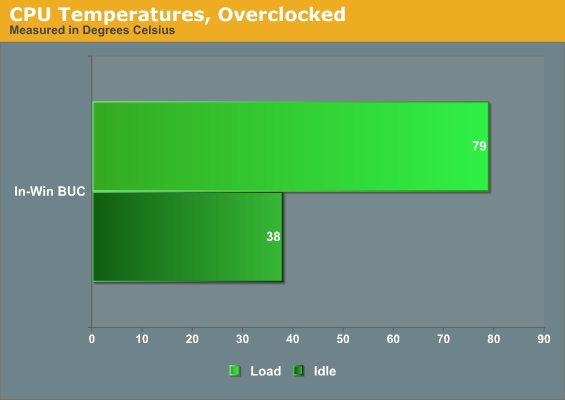
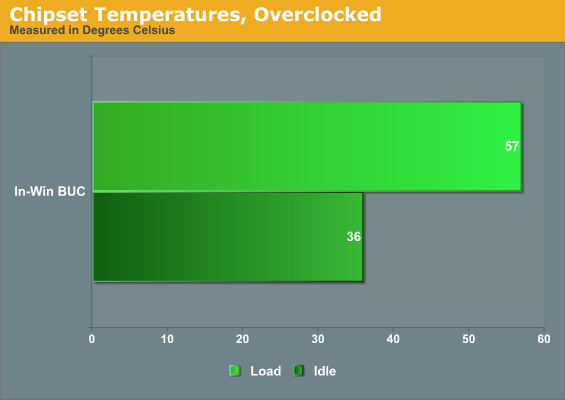
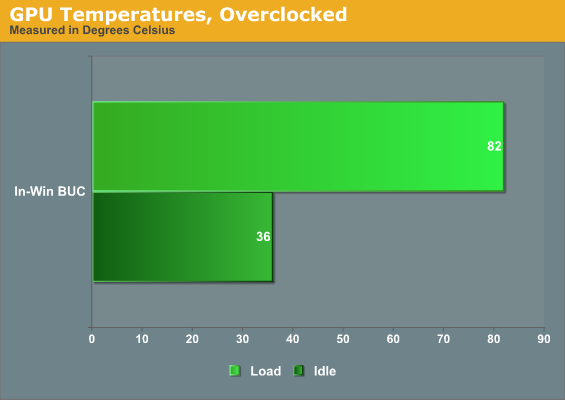
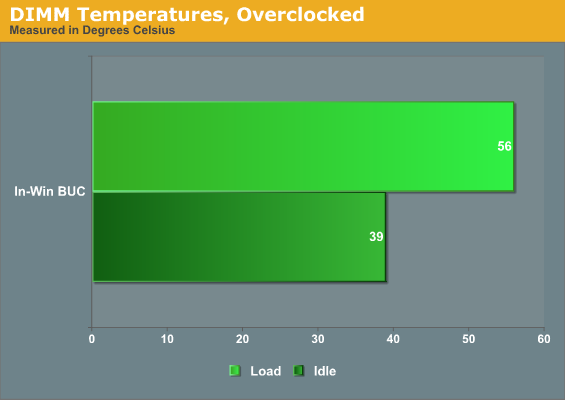
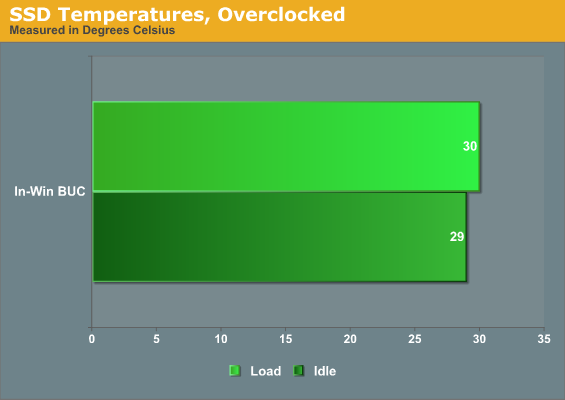
With the massive heat being generated by the overclocked i7-875K, the BUC has a much harder time keeping the temperatures in check. The processor's load temperature goes up 20C and is even idling a lot hotter, and the ambient temperature seems to be substantially higher as well as a result: chipset and RAM temperatures are both up at least 10C, though both are also doing more work with the faster processor. The GTX 580 and SSD remain largely unaffected, though, with both being quite close to cool air intakes.

Under the overclock, idle noise remains about the same, but the fans have to work harder and add about 3dB to the load noise. The Zalman 9900CNPS MAX we're using for the processor cooler is basically working as hard as it can at this point.










57 Comments
View All Comments
cjs150 - Tuesday, May 10, 2011 - link
Please include case dimensions in metric as well as inches. Motherboards, fans, radiators are all in metric measurements and it makes it a lot easier for those, like me, who stuff cases with lots of kit to work out will fit.I am also as frustrated as reviewer with cable routing. It really is not that difficult to allow a bit more space behind the motherboard tray. It is worse for me because I like silence from my pc and therefore want to put noise reducing stuff on the side panels.
Finally, I am not particularly bothered by the number of HD the case can hold (I am building a 6TB file server which will be enough for decades of films), all I need is space for 2 drives, an SSD + one HD. However, I do like to have an optical drive in the system. I have yet to see any case deal with providing real noise reduction/anti-vibration for an optical drive.
bhima - Tuesday, May 10, 2011 - link
The Antec 900 has become sort of the mainstream case standard. I think getting the data for that case will make it easier to judge what these numbers mean in the real world when testing other cases against it. That way, people can pick a case based on whether it cools better than the 900, or is quieter than the 900.Of course, once you have a bunch of cases reviewed, you won't need a reference case anymore, but while you build up a review archive it would be nice to get the info for such a popular case.
e_sandrs - Tuesday, May 10, 2011 - link
We've been using INWIN cases for a long time to build a few hundred computers per year and I have only good things to say about them! Very nice build quality for the price - I'm glad they're getting some love here on AT!xrror - Tuesday, May 10, 2011 - link
I kinda miss the stop motion video of you fighting with a screwdriver and actually installing a build into a case in this review. I wholeheartedly recommend buying a cheap electric screwdriver and having every case review feature you doing assemblies with the time lapse footage.I mean, reading about how all the pieces and such fit together is good - but seeing one wrangle with the cables and such really brings out a more practical view of a case. For instance in this review one thing that might stand out is the decided lack of need for a screwdriver. Also it would help show off the "backplane wiring" as you hooked up all the power connectors and then slide (I guess somehow?) the motherboard into the case.
jerem43 - Tuesday, May 10, 2011 - link
I've been using in-win cases for years. A strong sturdy case with ease of access, no sharp edges, quality power supplies and good heavy gauge steel make for an excellent case. Even their ,ore consumer oriented cases are a joy to work with, simple to access and maintain.kenyee - Friday, May 13, 2011 - link
That'd be a more useful noise test...use a standard drive and test how well you can hear the drive working...Michael Meio - Sunday, June 26, 2011 - link
It would be nice if as regular rule of computer case testing / reviewing, some part was dedicated to dust filters and the way they compare to other brands and models.IMO there are two kind of filters that cover the majority of options out there: Sponge and plastic.
I find that the presence of sponge or foam dust filters in a computer case shows some sort of lack of respect and a desperate corner cut attitude on the case manufacturer's part. A foam filter is in all aspects, the cheapest way to deal with it. It needs no special gap, no channel or punch holes to seat on, and obviously, minimum head scratching for the case's designer.
A plastic / nylon dust filter is different. It requires thinking. It needs a specific place to be. Just as the front cover or the side panels.. it relies on a designed mechanical solution to be attached to the case and held in place. It simply shows the attention to detail on the manufacturer's part.
The dust filters location, functionality, ease of use / remove / "washability" truly plays a big deal on my buying decision when it comes to chassis.
I don't own a BUC case and currently, I'm shopping around. It surprises me how difficult it is to find out what are computer case filters made of in pretty much every single review out there. Needless to mention, their location, ease of use, etc. This review unfortunately, is not an exception to that.